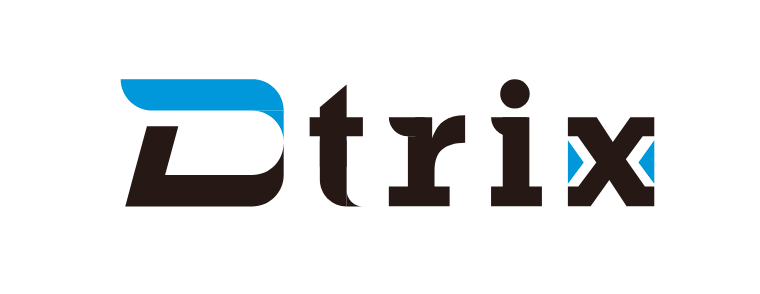- All Products
- Business Need
- Drix - Master Data Management

Drix - Master Data Management
Request Quote
Request Quote



Product Overview
Drix Master Data Management Platform (MDM) is a comprehensive tool focused on enterprise core data governance, designed to address a series of issues in the management, maintenance, sharing, and quality of enterprise master data.
Master data refers to core data describing key business areas, covering customers (name, address, currency, etc.), materials (category, unit of measure, etc.), suppliers (tax code, address, etc.), employees (name, position, etc.), etc. These data are stored in multiple systems, highly valuable, and feature cross-system uniqueness and reusability.
However, enterprises often face challenges such as inconsistent standards, low operational efficiency, data errors, and difficulty in sharing in master data management. The Drix Master Data Management Platform emerges as the times require. With flexible and comprehensive data modeling, complete data management functions, powerful system integration capabilities, customizable data quality specifications, and AI-enhanced application convenience, it provides full-lifecycle master data management support for enterprises, ensuring the accuracy, consistency, and availability of master data and helping enterprises make correct business decisions.
Product Advantages
- Flexible and Comprehensive Data Modeling: Allows users to build data models from scratch, enabling the creation of required data structures on the platform with low thresholds. It can flexibly manage various types of master data such as customers, suppliers, and materials without being restricted by system functions. After front-end modeling, the back-end automatically generates table structures, meeting enterprises' diverse data management needs.
- Complete Data Management Functions: Offers out-of-the-box data applications, supporting full-lifecycle management, historical version management, permission control, and other common enterprise needs. It allows data maintenance through multiple methods, supports custom query and display attributes, data export, online data copying and editing, querying historical versions and comparing changes, and can configure data permissions for different roles.
- Powerful System Integration Capabilities: Equipped with an interface platform, it can connect with any corresponding systems, map fields, and set data processing rules for each interface. It supports customizing query, receiving, pulling, and distributing interfaces for each type of master data for corresponding systems, enabling flexible connection with various business systems such as SRM, PLM, HR, OA, ERP, and MES. No code development is required, only front-end configuration is needed.
- Customizable Data Quality Specifications: Can customize data specifications based on business needs to achieve data quality control at all nodes of the system. It can create various data quality rules such as length, mandatory fields, and data comparison; establish similarity rules to identify similar data and prevent duplicate creation; and customize message types (reminder, error, confirmation) when rules are not met.
- AI-Enhanced Application Convenience: Supports convenient access to required information in the platform through natural language conversations, enabling basic statistics, trend analysis, Top N analysis, and attribution analysis, such as analyzing the reasons for the surge in material duplication frequency in the current month and querying the monthly material data duplication rate in the first half of the year, improving the efficiency of data query and analysis.
- Significant Cost Advantages: The product price is only 1/3 of that of international similar MDM products, which can significantly reduce enterprises' procurement costs. At the same time, no-code development reduces development costs (by approximately 90%) and operation and maintenance costs (by approximately 60%), and reduces MDM-related IT investment. It is estimated that it can reduce IT investment by more than 180 person-days annually.
Application Scenarios
- Master Data Management for Various Enterprises: Suitable for enterprises of different industries and scales, especially recommended for enterprises with annual revenue exceeding 50 million US dollars and more than 5 internal business systems. It can effectively manage various types of master data such as customers, materials, suppliers, and employees, solving problems such as scattered data, lack of maintenance standards, difficult sharing, and low quality.
- Enterprise Data Integration and Sharing: When data integration between enterprise business systems is chaotic, making it difficult to locate integration problems and prone to buck-passing, the platform can achieve orderly data integration and sharing, simplify business data integration interfaces, improve stability, and reduce change costs.
- Data Quality Improvement and Control: Aiming at the low quality of existing enterprise data, such as inaccuracy, incompleteness, inconsistency, and duplication, the platform can improve data quality through functions such as custom quality rules and similarity checks, ensuring that data meets business needs and industry standards.
- Enterprise Decision Support: By providing accurate, consistent, and complete master data and powerful data analysis capabilities, it provides strong support for enterprise business decisions, avoiding wrong decisions caused by improper master data management.
- Enterprise Expansion and Business Development: For example, when retail enterprises expand their stores, they need to integrate master data with business and financial platforms to ensure the accuracy, timeliness, and consistency of data to support store expansion and new retail business development.
Case Analysis
- Case Enterprise: Company L (retail enterprise)
- Company Plan: Expand convenience stores to 10,000 by the end of 2025.
- MDM Goal: Integrate master data with business and financial platforms to ensure data accuracy, timeliness, and consistency, supporting store expansion and new retail business.
- Solutions:
- Adopted the Drix Master Data Management Platform to build a comprehensive master data management system, centrally managing financial master data such as stores, accounting subjects, customers, and employees.
- Designed the overall system architecture to realize data exchange and integration with multiple source systems such as ERP, financial management, membership system, and personnel system.
- Optimized the master data integration method from a mesh master data exchange model to a star model, realizing connection with various systems centered on MDM.
- For personnel master data, formulated numbering rules (new employees adopt 6-digit sequence IDs, ranging from 110000 to 999999, while old employees retain their original numbers), and clarified personnel attributes and classification standards.
- Project Achievements:
- Realized automatic mapping of master data, with a system mapping accuracy rate of 100%. Offline mapping and drill-down forms were reduced from 271 to 19, with only offline forms for some department-specific data retained.
- Shortened the budget preparation cycle. The time for annual budget + semi-annual rolling forecast for 100 stores in the South China expansion project was reduced from 2202 hours to 367 hours.
- Embedded more than 40 indicator fields in master data such as stores, regions, and suppliers, enabling multi-dimensional financial analysis according to stores, regions, and management needs.
- Realized automatic integration and function allocation of various master data, and it is estimated that MDM-related IT investment will be reduced by more than 180 person-days annually.
- Unified indicator attribute definitions and created an enterprise-level data dictionary to ensure the accuracy of cross-system and cross-region reports.